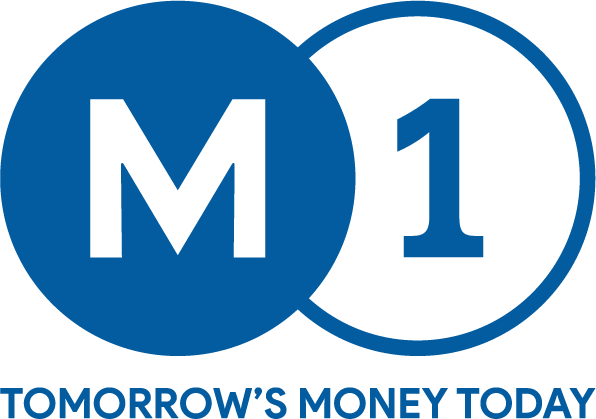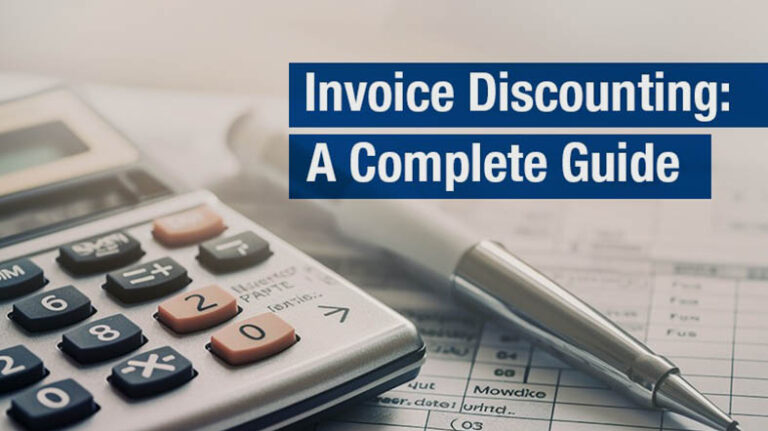In the realm of business, it is most commonly said that “Cash flow is the lifeblood of a business”. Yes, it’s remarkable how few entrepreneurs proactively manage their cash flow to prevent ending up with an empty bank account and unpaid bills. The good news is that enhancing cash flow management in financial management can be a straightforward endeavor through a few complicated measures. In this article, we’ll present five valuable tips to aid you in managing your cash flow effectively. These insights will not only prepare you for the future but also safeguard your business against financial challenges.
However, before delving into these tips, it’s important to understand the concept itself, “What is Cash Flow?”
What is Cash Flow?
In simple words, cash flow represents the money that enters and exits a company’s financial accounts within a specific time frame.
Typically, a cash flow statement encompasses three primary categories of cash flow.
- Operational Cash flow: This involves the funds earned, expended, or incurred during a company’s core business operations.
- Investment Cash flow: This is the money the company either gains or spends when buying or selling long-term investments like property and equipment.
- Cash flow from financing. This category involves all the money activities related to getting funds and repaying money from investors and creditors.
How Businesses Can Generate Cash
Businesses generate cash through their products and services (cash from operations), obtaining funds via borrowing or selling company shares (cash from finance), and selling company assets (cash from investing). Cash flow management is the practice of maintaining a steady and sustainable cash supply through these means.
Methods Businesses Use to Monitor Cash Flow
- Cash flow forecasts, which lay out projected income and taxes on a timeline to anticipate future cash availability.
- Cash flow statements illustrate the amount of cash generated from operations (sales) in comparison to loans or asset sales.
The Importance of Cash Flow
Cash flow management is of utmost importance to businesses. It guarantees their ability to handle their day-to-day costs, meet payroll, and fulfil financial commitments. It plays a critical role in maintaining solvency, maintaining debts, and capitalizing on growth prospects. Stable cash flow enhances financial strength, sustains positive relationships with suppliers, and empowers informed choices, ultimately fostering long-term success and adaptability in an ever-changing business landscape.
Cash Flow Forecasting & Management Tips
Create a Cash Flow Management Projection:
Begin by gathering previous financial data for the baseline. Then, estimate future income sources such as sales, loans, and investments. Categorize expected expenses, like operational costs, loan repayments, and taxes. Finally, leverage financial software or modelling tools to generate a detailed cash flow forecast.
Continuously Monitor Cash Flow:
It’s crucial to regularly update your cash flow projection, especially when circumstances change. Keeping a close eye on actual cash flow against your forecast ensures you have real-time insights of your financial situation.
Identify Cash Flow Trends:
To do this, analyse your cash flow for recurring patterns and trends, helping you prepare for financial shifts. Also, it’s important to recognize seasonal variations and cyclical income and expense fluctuations, which allow you to develop strategies to maintain a financial course.
Boost Cash Inflows:
This involves enhancing sales and revenue through effective marketing and sales strategies. Additionally, offering early payment discounts to expedite cash receipts can be advantageous. Encouraging prompt payments and streamlining invoicing processes contributes to a steady cash flow.
Control Expenses:
It begins with optimizing operational costs in compliance with regulations. Seeking advantageous deals with suppliers and creditors can lead to significant savings. Additionally, implementing cost-saving measures during challenging times is vital for maintaining financial stability and securing cash flow.
Efficient Inventory Management:
Maintaining optimal inventory levels is essential for efficient financial management. Employing just-in-time inventory practices, which help reduce costs, can be a valuable strategy.
Manage Accounts:
This includes promptly collecting accounts receivable and ensuring that the cash owed to your business is received in a timely manner. Also, it involves negotiating favourable payment terms with suppliers, creating a win-win situation.
Build Reserves:
This involves creating a reserve for unplanned expenses for better financial planning.It also includes investing access funds to generate cash income, helps enhance financial security, and strengthens your financial base.
Financing Options:
This includes exploring short-term loans and credit lines when the need arises, giving you access to necessary funds. It also ensures that financing costs align with the benefits, aligning your decisions to your financial health.
Scenario Planning:
This includes developing contingency plans for different cash flow scenarios, helping you prepare for every financial situation. Additionally, it includes preparing for unexpected events with backup funding sources.
Cash Flow Categories
For any business or personal financial plan, Cash flow is the cornerstone. It acts as the essential fuel that keeps everything running seamlessly, enabling growth, stability, and the pursuit of your financial objectives. Whether you are a business owner aiming to refine your operations or an individual seeking to manage your personal finances more efficiently, knowing and employing effective cash flow strategies can have a profound impact.
- Forecasting Cash Flow: Predicting future cash based on historical data and expected income and expenses.
- Maximizing Revenue: Strategies to boost income, like optimizing pricing, increasing sales, and diversifying income streams.
- Expense Control: Efficiently managing and reducing operating costs through cost-cutting measures and smarter spending.
- Working Capital Management: Managing cash tied up in accounts receivable, accounts payable, and inventory by improving collections, extending payment terms, and optimizing inventory levels.
- Debt Management: Handling existing debt, including refinancing, consolidating, and negotiating better terms.
- Surplus Cash Management: Optimizing surplus cash through investments or capital projects to generate returns.
- Emergency Funds: Establishing reserves for unexpected expenses or downturns.
- Financial Analysis: Regularly reviewing cash flow statements, financial reports, and metrics for tracking trends.
- Tax Planning: Efficient tax strategies to minimize tax liabilities.
- Contingency Plans: Prepare for various cash flow scenarios, including worst-case situations.
- Budgeting: Creating and following a cash flow budget for strategic fund allocation.
- Payment Policies: Implementing invoicing, payment terms, and collection policies.
- Technology and Software: Utilizing financial software and tools for a streamlined cash flow management process.
- Operational Efficiency: Enhancing efficiency across the organization, from procurement to customer service.
- Risk Management: Identifying and addressing financial risks to safeguard cash flow.
Goals of Managing Cash Flow
In the extensive world of personal and business finance, the skill of managing cash flow serves as a guiding light. It’s more than just tracking figures; it involves strategically using your financial resources to reach distinct goals. Whether you aim to ensure a secure retirement, grow your business, or simply gain better control over your day-to-day finances, comprehending cash flow management objectives is the path to realizing your financial aspirations.
- Maintaining Liquidity: Ensure there’s enough cash to cover short-term bills without relying on external funding.
- Preventing Financial Distress: Avoid financial crises by having sufficient cash to meet financial commitments and debt obligations.
- Optimizing Cash Flow: Maximize money coming in and minimize spending through efficient operations.
- Supporting Business Growth: Support business expansion by having access to capital for investments.
- Boosting Financial Resilience: Build financial safety nets to handle unexpected expenses and economic downturns.
- Nurturing Supplier Relationships: Pay suppliers on time to maintain good relationships and negotiate better terms.
- Ensuring Employee Commitment: Ensure timely employee payments to retain a motivated workforce.
- Tax Compliance: Set aside funds for taxes to prevent penalties and legal issues.
- Enhancing Operational Efficiency: Continuously enhanced operational efficiency to reduce costs and improve cash flow.
- Improving Monitoring and Reporting: Implement strong cash flow tracking systems to monitor and compare cash flow with forecasts.

Challenges in Cash Flow Management
Managing cash flow is vital for businesses, but it’s not always straightforward. Think of cash flow like a river in the financial landscape; it can flow smoothly at times, but sometimes it faces obstacles. To ensure wis e financial decisions and the smooth operation of your business finances, it’s important to grasp and tackle the challenges like:
- Seasonal Cash Crunch: Seasonal sales fluctuations can make it hard to cover fixed costs during slow periods.
- High Overhead Expenses: Excessive fixed expenses like rent and salaries can deplete cash when revenue is irregular.
- Working Capital Shortage: Inadequate working capital finance can lead to short-term cash struggles.
- Market Downturns: Economic downturns or disruptions can reduce sales, impacting cash flow.
- Unexpected Expenses: Unplanned costs like repairs or fines can strain cash reserves.
- High Debt Servicing: Heavy debt, especially high-interest loans, can lead to significant cash outflows and affect liquidity.
TReDS: A Revolutionary Solution for Cash Flow in Business
Trade Receivables Discounting System (TReDS) is indeed a game-changing solution for cash flow management, especially for small and medium-sized enterprises (SMEs). Here’s why TReDS is considered a game-changer in this regard:
- Enhanced Cash Flow Management: TReDS streamlines cash flow, enabling quick access to working capital, optimizing cash management, reducing credit dependence, and ensuring efficient invoicing. It also facilitates flexible supplier deals, security, and transparency.
- Improved Financial Planning: TReDS provides reliable financing, diverse funding options, and better financial planning, empowering businesses to invest, expand, and maintain cash reserves.
- Efficient Dispute Resolution: TReDS includes mechanisms for swift dispute resolution, preventing payment delays and ensuring smooth financial operations for buyers and sellers.
Enhancing Cash Flow Management with M1xchange TReDS
M1xchange assists businesses in cash flow management by providing a platform that helps them access money trapped in unpaid invoices. Companies upload these invoices to the platform, where financiers offer early payment at a reduced rate. These speeds up the availability of cash, enabling businesses to meet short-term financial needs, promptly pay suppliers, and invest in growth. M1xchnage also evaluates the creditworthiness of buyers, lowering the risk of unpaid invoices and making cash flow more predictable. In summary, M1xchnage offers a dependable and efficient solution for companies to improve their financial liability and effectively handle their cash flow.
- Quick Funds Access: M1xchange TReDS lets you turn unpaid invoices into immediate funds, ensuring you have the cash to cover immediate expenses.
- Optimized Working Capital: Early access to funds allows you to optimize your cash flow for meeting financial commitments, paying suppliers, and investing in growth.
- Reduced Credit Reliance: M1xchange TReDS offers an alternative to traditional loans, reducing dependence on high-interest credit lines.
- Efficient Invoicing: The platform streamlines invoice processing, reducing the time between invoicing and payment.
- Flexible Supplier Deals: M1xchange TReDS allows flexible negotiations with suppliers, preventing cash flow, and strong relationships.
- Enhanced Financial Planning: Reliable financing through M1xchange TReDS supports effective financial planning for investments, expansions, and cash reserves.
- Diverse Funding Network: M1xchange TReDS connects you with various financiers, offering more financing options.
FAQs
Positive Cash Flow indicates that a company is receiving more money than it’s spending, while Negative Cash Flow indicates the reverse- more spending than it’s receiving.
Debt financing involves obtaining a loan from a convenient lender, such as a bank. Equity financing, on the other hand, entails acquiring capital in return for a share of ownership in the business.
Improving cash flow can be achieved by utilizing M1xchange’s platform to release funds tied up in outstanding invoices. This allows for faster access to working capital cycle, ultimately leading to enhanced liquidity for the company.
Managing and controlling cash flow in a business involves overseeing the money flowing in and out. Positive cash flow signifies earning more than spending. Effective cash flow management strategies encompass sending timely customer invoices, selling low-moving inventory, and closely tracking expenditures.
















